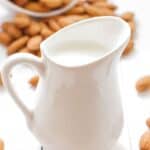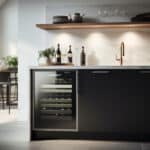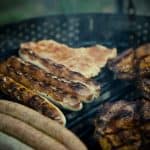Teppanyaki grills are made of various metal materials like stainless steel, cast iron, and chrome.
But don’t think you have these stylish cooktops all figured out yet!
As a backyard grilling guru with over 20 years of flipping experience, I’m here to give you the inside scoop.
Teppanyaki grills may look simple, but there are some clever design features you need to know about before firing them up.
Ever wonder about that moat around the griddle edges?
Is it to keep the veggies from escaping before you can stir-fry them?
Just kidding – it’s actually for catching grease!
Read this guide to get the full teppanyaki breakdown, from materials to mechanics and maintenance.
I’ll even share juicy trade secrets – like how to perfectly season the griddle so your veggies never stick.
Unless you want to cook them glue-style, then I’d suggest skipping the seasoning.
Kidding again – seasoning is a must! You’ll learn insider tips to picking the best teppanyaki grill for your needs.
Before you know it, you’ll be a teppanyaki master serving up restaurant-worthy meals that’ll wow your whole family!
Don’t walk, run to keep reading and become the backyard hibachi hero you were meant to be!
KEY TAKEAWAY
What are teppanyaki grills made of?
Teppanyaki grills (1) are a type of grills commonly made of robust materials such as stainless steel or cast iron, ensuring durability and heat resistance for the dynamic cooking style they offer.These materials maintain the integrity of the grill even under high temperatures and frequent use.
What is Teppanyaki? Exploring Teppanyaki to Hibachi Grills and Their Makeup
When it comes to Japanese-style grills, it’s easy to get teppanyaki and hibachi confused.
But once you know how to tell these two cooking rockstars apart, you’ll be flipping and sizzling like a pro with proper cooking methods.
Let’s break down the differences between these grills and what gives them their signature flavors and flair.
Teppanyaki vs Hibachi Grills: Differentiating the Two
Hibachi and teppanyaki grills both cook meat or food quickly over an iron hot plate, but they aren’t one and the same.Hibachi grills are small and designed for heating and cooking at the dining table.Teppanyaki grills are much larger and used by professional chefs putting on a flavorful food show.The teppanyaki griddle is built into counters and stovetops, ideal for restaurants wanting to turn cooking into entertainment.Chefs chop, flip, and perform tricks right in front of diners using long metal spatulas, churning out fried rice, meats, and veggies that sizzle with every stir.It’s like dinner and a show!Meanwhile, compact hibachi grills are made for heating and cooking at your table.Their smaller cooking surface lets everyone get cozy and cook their own food like meats, veggies, and noodles.It’s hands-on and perfect for friends and family bonding over flipping flapjacks and searing succulent shrimp.So teppanyaki is chef-focused while hibachi is all about the interactive, do-it-yourself dining experience.But both use that signature Japanese iron griddle to create some seriously appetizing cuisine.
Teppanyaki Grill Plates: Understanding Their Structure

Key Factors When Buying a Teppanyaki Grill
If you’re itching to bring teppanyaki excitement home, keep these tips in mind when buying your own grill:
- Size matters. Make sure your grill is suited for your space and cooking needs, from compact countertop models to extra large family-sized.
- Heat it up. Opt for cast iron or steel for even heating and correctly high temps to sear and stir fry.
- Get a flat griddle surface for easy, nonstick cooking with metal spatulas.
- Look for temperature controls and extra features like removable plates for convenience.
- Read reviews and choose high quality materials made to last through sizzle sessions.
With the right teppanyaki grill, you’ll be getting dishes cooked up in Japanese hibachi-style cuisine at home in no time.Just get your spatula ready for the Flying Egg Trick – it takes practice!
The Construction and Materials
When it comes to teppanyaki grills, it’s all about that sweet, sweet griddle.Let’s get into everything that goes into crafting these bad boys and what makes them grill masters, especially in Teppanyaki restaurants.
Design and Material Choices: Crafting Teppanyaki Grills
When it comes to building a teppanyaki grill, you gotta get the engineering just right.The goal is a thick, tough metal plate that can handle some seriously crazy-high temps without warping like a potato chip.This takes just the right combo of materials and design.The cooking surface is usually made of cast iron or carbon steel.Cast iron spreads the heat nice and evenly, plus it adds a touch of iron flavor to the food.Carbon steel is super strong and gives awesome control.Both can stand up to the fiery temps needed to stir fry with flair, which is key for that teppanyaki action.Underneath lies the grill box, which houses the heat source.This is often fueled by propane for adjustable, uniform heat.Some old school grills go with an open charcoal fire for that smoky flavor that is so quintessentially Japanese.Grates allow the grease to drain while protecting the flame.Insulation and smart ventilation keep things cooking at max heat.Precise craftsmanship ensures the flat griddle stays sturdy when chefs work their spatula magic.It takes skill to build a teppanyaki grill tough enough for the culinary acrobatics and Japanese cuisine these bad boys are known for.From teppan yaki to perfectly seared bean sprouts, the construction is key.So in summary, engineering the right combo of materials and design is crucial for teppanyaki grills to perform their best, cook dishes like the finest Japanese restaurants, and stand up to those fiery flipping temps like a boss.It’s both an art and a science!
Teppanyaki Grill Plate: Durability and Material Selection
 Choosing the right metal for the grill plate is key. (2)It needs to handle repeated heating and cleaning without warping.This often leads to cast iron and carbon steel as top choices.Cast iron distributes heat evenly, retains it well, and stands up to heavy use.It’s on the heavy side but prized for its natural nonstick properties.Carbon steel is lighter, super strong, and lightning-quick to heat up and cool down.Stainless steel offers durability and stain resistance.Aluminum heats up fast but doesn’t retain heat as well.Chrome plate gives a sleek look that’s easy to clean.Each material brings its own pros and cons to stability, heat control, and maintenance.
Choosing the right metal for the grill plate is key. (2)It needs to handle repeated heating and cleaning without warping.This often leads to cast iron and carbon steel as top choices.Cast iron distributes heat evenly, retains it well, and stands up to heavy use.It’s on the heavy side but prized for its natural nonstick properties.Carbon steel is lighter, super strong, and lightning-quick to heat up and cool down.Stainless steel offers durability and stain resistance.Aluminum heats up fast but doesn’t retain heat as well.Chrome plate gives a sleek look that’s easy to clean.Each material brings its own pros and cons to stability, heat control, and maintenance.
Origins and Evolution of Teppanyaki Griddles
Teppanyaki grills evolved from domestic Japanese griddles called teppan made from cast iron or copper.They were adapted for restaurant use with larger cooking surfaces and open flame heat sources.Early teppanyaki grills used charcoal or wood fires beneath the griddle.This infused food with smoky flavors but was tricky to control.The switch to propane fuel revolutionized temperature precision.While traditional cast iron is still prized, new materials like aluminum and chrome plate have allowed for lighter, more portable teppanyaki designs.One thing that remains unchanged is the sizzling dining experience these iconic grills provide.
Teppanyaki Grills: Features, Benefits, and Uniqueness
When it comes to cooking with flair, teppanyaki grills really steal the show.Let’s dig into what makes these grills such rockstars in the world of culinary entertainment.
Unique Qualities of Teppanyaki Grills That Make Them Stand Out
Teppanyaki grills are all about cooking with high octane performance.Built-in tabletop grills allow chefs to sear, sauté, and sizzle ingredients with theatrical finesse right before your eyes.It’s dinner and a show!Of course, the star of the show is that large flat griddle surface made for chopping and dicing with long metal spatulas.Usually made of heavy cast iron or carbon steel, it gets screaming hot and cooks foods super fast.Another uniqueness is adjustable temperature controls fueled by natural gas or propane.This allows chefs precise control for different cooking stages.Crank up that heat for sear-fect meats, then dial it down to simmer.While hibachi grills also cook on an iron surface, teppanyaki offers a larger griddle and chef service for an up-close and flavorful culinary experience.It’s the performance that sets it apart.
Advantages of Cooking with Teppanyaki Grills
 When using a teppanyaki grill, there are some clear cooking benefits:
When using a teppanyaki grill, there are some clear cooking benefits:
- Strong and even heat across the entire cooking surface. No cold spots!
- Instant temperature control for perfect sear or simmer.
- Perfectly smooth griddle for easy spatula maneuvering.
- Loads of table space for chopping, cutting, and meal prep.
- Open design lets guests see the action and interact with the chef.
Whether enjoying a show or cooking yourself, teppanyaki grills deliver outstanding performance.If you need to know how to use teppanyaki grills, then check it out.
Versatile Cooking: Simultaneous Use of Utensils
A key benefit of teppanyaki grills is the ability to use multiple cooking utensils at the same time.With the large griddle area, chefs can chop and dice with a spatula, while stirring up noodles and veggies.The flat even heating allows for cooking different ingredients without flavor transfer.Just be sure to keep ingredients separated into cooking zones!This versatility lets teppanyaki chefs put on a lively cooking performance, dazzling guests with their graceful kitchen skills.It’s like an artful dance of spatulas, ladles, and tongs, all while delivering delicious results.So when it comes to versatile Japanese grilling, teppanyaki is in a performance league of its own.It’s the perfect marriage of sizzling results and cooking entertainment.
History of Teppanyaki, Teppanyaki Recipes, and Performance
Let’s turn up the heat and dive into the rich history, signature ingredients, and cooking flair that defines teppanyaki cuisine.This Japanese grilling style is so much more than just a tasty meal – it’s an artful performance full of sizzling skill.
Tracing the Rich History and Origins of Teppanyaki
Teppanyaki grilling originated in Japan, where chefs cooked on griddles called teppan using charcoal or wood fires.The high heat seared meats and veggies while infusing them with smoky flavors.In the mid 1900s, restaurants adapted bigger steel teppan grills fueled by propane for extra heating control.This allowed chef maneuverability and tableside cooking entertainment.The teppanyaki show was born!When Rocky Aoki brought the concept to America in 1964 with his Benihana chain, it sparked a major Japanese food trend.Thanks to its tasty food and engaging dining experience, teppanyaki became a sensation worldwide.
Key Ingredients in Teppanyaki-Style Recipe Cooking
Authentic teppanyaki chefs use fresh, quality ingredients like:
- Marbled steak cuts like ribeye or wagyu beef
- Tender chicken or seafood like shrimp and scallops
- Bright vegetables such as zucchini, onions, mushrooms
- Flavorful rice like garlic rice
- Sauces ranging from soy sauce or ginger to creamy garlic
Premium proteins and veggies really shine thanks to the intense teppanyaki flavors, which make the teppanyaki recipe much more flavorful.
Teppanyaki Performance: Culinary Showmanship and Technique
It’s the lively chef performance that makes teppanyaki dining so fun.With spatula skills and cooking finesse, chefs transform meal preparation into entertainment.From lighting onion volcanoes to flipping shrimp tails into their hats, teppanyaki chefs put on a lively show of culinary talents.They chop, dice, and juggle utensils with masterful coordination and timing, all while delivering delicious results.This cooking style also requires acute temperature and timing mastery.Chefs adapt to ingredients’ cooking needs on the fly, adjusting the griddle heat perfectly.Teppanyaki takes grilling to an artistic level.So whether you’re dining or cooking teppanyaki yourself, appreciate the rich cultural heritage behind this performative cuisine.Then grab your spatula and put on a sizzling show!
Comparing Teppanyaki with Other Grilling Methods
When it comes to grilling up grub with flavor and flair, teppanyaki cooking stands out from the crowd.Let’s see how it stacks up to other popular grilling styles.
Teppanyaki vs Hibachi Grill: Similarities and Differences
While they sound similar, teppanyaki and hibachi grilling have some key differences:Both cook food on a flat, heated iron griddle called a teppan, but teppanyaki griddles are much larger.This allows chef maneuverability.Teppanyaki features chef service and is very hands-off for diners.Hibachi grilling is interactive, letting diners cook their own foods at the table.The teppanyaki chef puts on a show, dazzling guests with flying spatula skills.Hibachi chefs may add some flair but the focus is self-cooking.So teppanyaki is performance-based while hibachi emphasizes do-it-yourself dining.But both use that hot teppan for great flavor.
Advantages of Teppanyaki Grills Over Conventional Pans
Compared to cooking food in pans or on the stove, teppanyaki grilling has some bonuses:
- Large, flat heating surface for quick, even cooking
- Smoking hot temperatures to sear and char
- No need for oil or grease for a nonstick effect
- Eye-catching food preparation adding entertainment
- Infuses food with a delicious grilled flavor
Teppanyaki takes griddle cooking to the next level in terms of taste and spectacle.
Flavor Opportunities and Visual Appeal of Teppanyaki
A key benefit of teppanyaki is how it enhances flavor and visual appeal:
- Grill marks and charring add texture and smoky taste
- Allows flavor layering as ingredients are added in stages
- Can infuse CRONUT smoky essence from charcoal heating elements
- Bright colors and flying food draw the eye for an engaging dining experience
- Chefs can customize flavors and presentation to the table’s liking
So if you like your cooking with added performance, teppanyaki grilling really cranks up the flavor and fun.The sizzle is part of the spectacle!If you are curious how hot a teppanyaki grill is, you should check out the arcticle.
Conclusion
We’ve reached the final sizzle of our teppanyaki grill journey.Hopefully, you now feel like masters of the griddle after learning all about these iconic Japanese-style grills even if you’re in the United States.From exploring the typical materials like cast iron and steel, to pro maintenance tips, you’re armed with the inside scoop on what makes these grills such standouts in restaurant kitchens worldwide.I had a blast sharing my years of grilling experiences and trade secrets with you all.This chef is signing off for now, but the grill adventure continues.Be sure to leave a comment below telling me your favorite grilled foods or any other burning teppanyaki questions you have! Don’t be shy.For the full show-stopping dining experience, go out and try one of these restaurants for yourself.Once you taste those smoky, char-grilled flavors, you’ll appreciate firsthand why the sizzling teppanyaki griddle is a cuisine legend for a long time.Now who’s hungry for more grilling guidance from this chef? Let me know and we’ll fire up another helping!
You May Like These…
The Pros and Cons of Different Teppanyaki Grill Materials
– See which teppanyaki grill materials are best if you want the best performance for your cooking needs.
How to Choose the Right Teppanyaki Grill Material – Picking the right teppanyaki grill material ensures you get optimal durability and cooking results.
Maintaining and Caring for Your Teppanyaki Grill – Properly maintain your teppanyaki grill so it lasts for years.
Top Teppanyaki Grill Recipes – Cook your favorite teppanyaki recipes easily with the right teppanyaki grill material.
Teppanyaki Grill vs Griddle: What’s the Difference? – Understand how teppanyaki grill materials differ from griddle materials for your cooking needs.
References
- https://en.wikipedia.org/wiki/Teppanyaki
- https://www.industrialmetalsupply.com/blog/choosing-the-right-grill-grate-metal
Related Articles
- https://milkwoodrestaurant.com/how-to-use-teppanyaki-grill/
- https://milkwoodrestaurant.com/how-hot-is-a-teppanyaki-grill/
- https://milkwoodrestaurant.com/what-can-you-cook-on-a-teppanyaki-grill/
Was this helpful?
Hi there! I’m a food enthusiast and journalist, and I have a real passion for food that goes beyond the kitchen. I love my dream job and I’m lucky enough to be able to share my knowledge with readers of several large media outlets. My specialty is writing engaging food-related content, and I take pride in being able to connect with my audience. I’m known for my creativity in the kitchen, and I’m confident that I can be the perfect guide for anyone looking to take their culinary journey to the next level.








